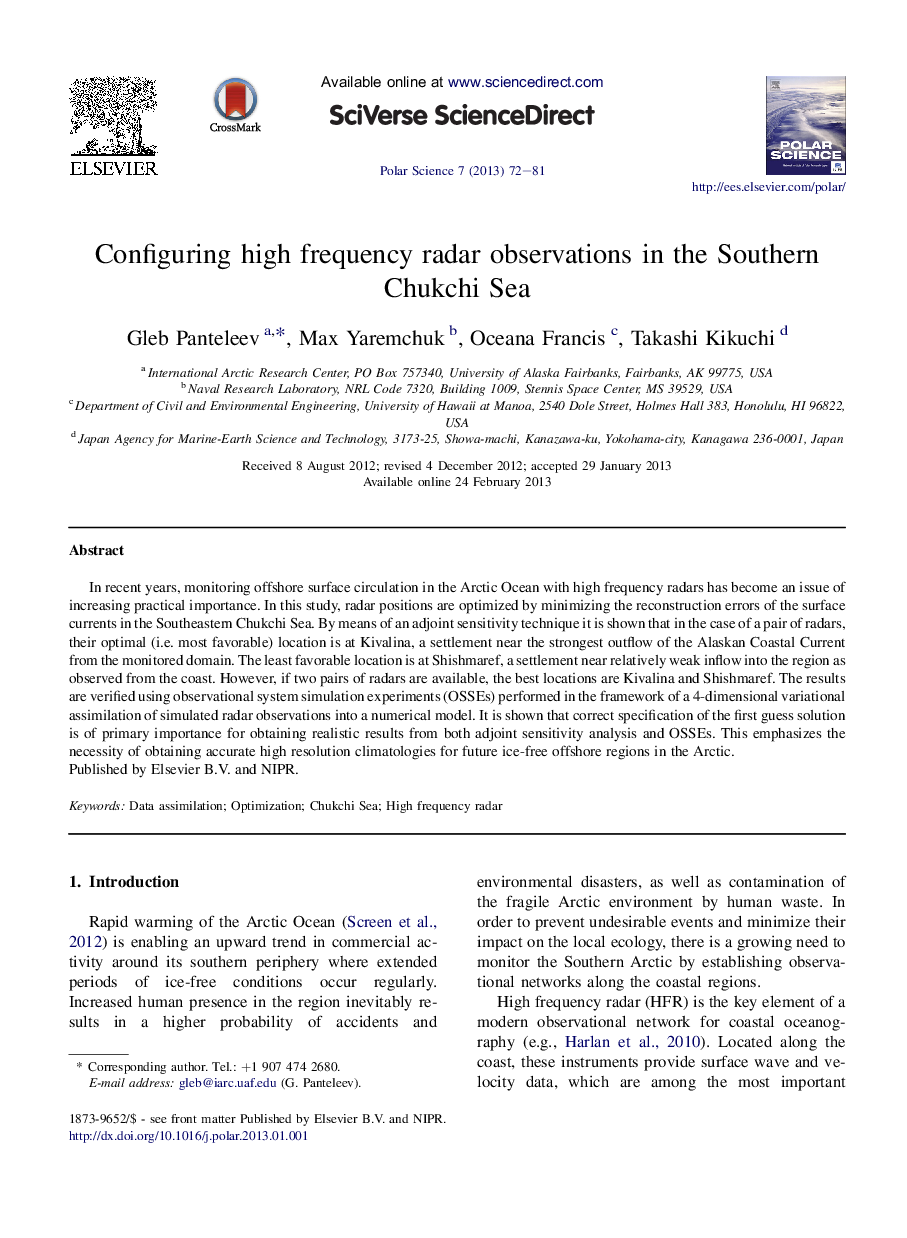| Article ID | Journal | Published Year | Pages | File Type |
|---|---|---|---|---|
| 6431539 | Polar Science | 2013 | 10 Pages |
In recent years, monitoring offshore surface circulation in the Arctic Ocean with high frequency radars has become an issue of increasing practical importance. In this study, radar positions are optimized by minimizing the reconstruction errors of the surface currents in the Southeastern Chukchi Sea. By means of an adjoint sensitivity technique it is shown that in the case of a pair of radars, their optimal (i.e. most favorable) location is at Kivalina, a settlement near the strongest outflow of the Alaskan Coastal Current from the monitored domain. The least favorable location is at Shishmaref, a settlement near relatively weak inflow into the region as observed from the coast. However, if two pairs of radars are available, the best locations are Kivalina and Shishmaref. The results are verified using observational system simulation experiments (OSSEs) performed in the framework of a 4-dimensional variational assimilation of simulated radar observations into a numerical model. It is shown that correct specification of the first guess solution is of primary importance for obtaining realistic results from both adjoint sensitivity analysis and OSSEs. This emphasizes the necessity of obtaining accurate high resolution climatologies for future ice-free offshore regions in the Arctic.
